Volcanoes are one of the most devastating and dangerous natural forces. Most volcanoes are 10,000 to 100,000 years old, and according to scientists, there are 1,500 active volcanoes around the world today. Alone in the US, there are about 169 volcanoes that scientists consider active; most of them can be found in Alaska.
A volcano can be active, dormant (temporarily inactive), or extinct (not expected to erupt again). Volcanoes are formed when hot magma erupts onto the Earth’s surface in the form of lava. The flowing lava and ash forming a large cone are what we know as a volcanoes.
Volcanoes change not only the world’s landscape but also the lives of the people living near them. Today about 500 million people live close to active volcanoes. In recorded history, there have been some incredibly devastating and powerful volcanic eruptions.
It’s very difficult for scientists to measure and rank the strength of eruptions, so here we have listed the 10 deadliest volcanic eruptions by death toll.
1. Laki, Iceland (1783)
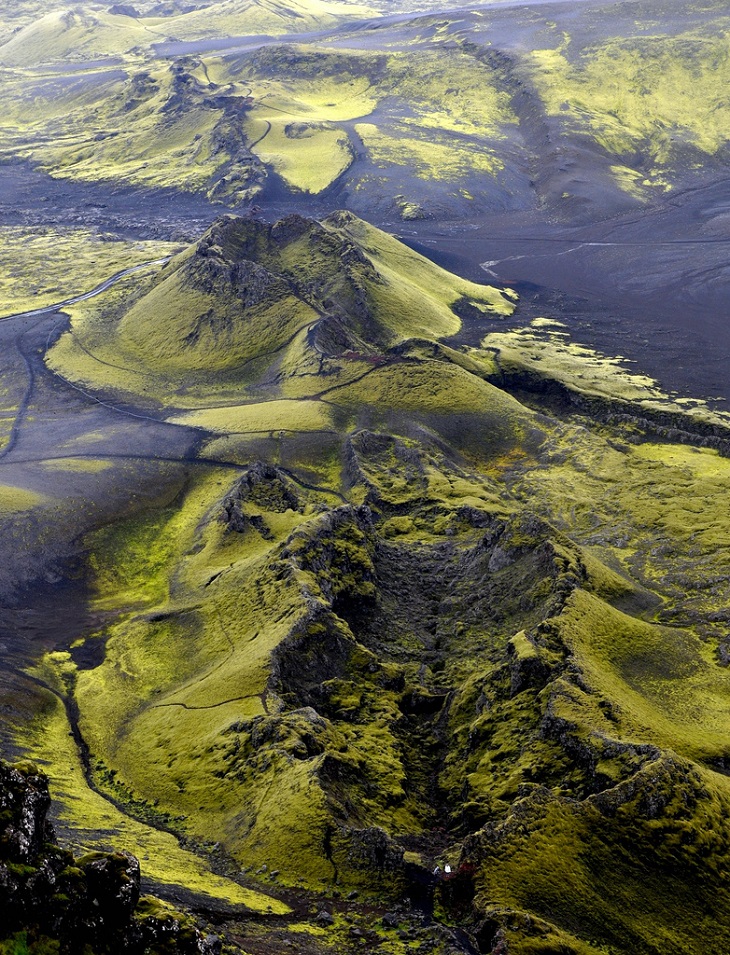
via www.jellyfields.com
The eruption began in June 1783 and lasted eight months. It wasn’t a single enormous explosion but rather 8 months’ worth of lava flows and explosions. The impacts of the eruption were felt around the entire Northern Hemisphere for years after. It is still a researched topic whether the eruption had an impact on the Earth’s climate or not. Either way, Iceland had to face the devastating impacts of the Laki eruption, such as illnesses (caused by volcanic gases), famine, acid rain, and environmental stress caused the death of about 20% of the Icelandic population.
2. Huaynaputina, Peru (1600)
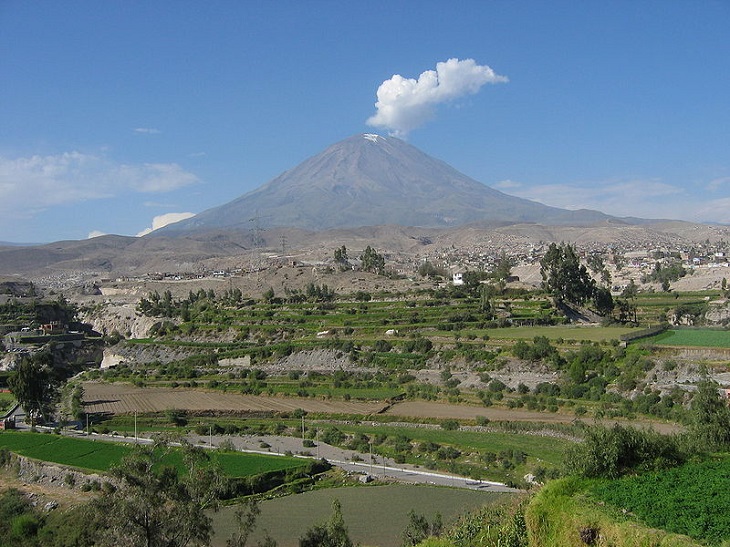
The eruption of the Huaynaputina in southern Peru in February 1600 was the largest volcanic explosion in South America in historic times. Naturally, the local damage was catastrophic due to the volcanic mudflows destroying villages for miles around. The enormous amount of smoke and ash in the atmosphere had devastating effects across the planet. The following year, global temperatures dropped by about 1 Fahrenheit, causing exceptionally cold winters from 1600 to 1602. During these years, Russia suffered the worst famine leaving behind a death toll of 2,000,000, one-third of the population.
3. Mount Tambora, Indonesia (1815)
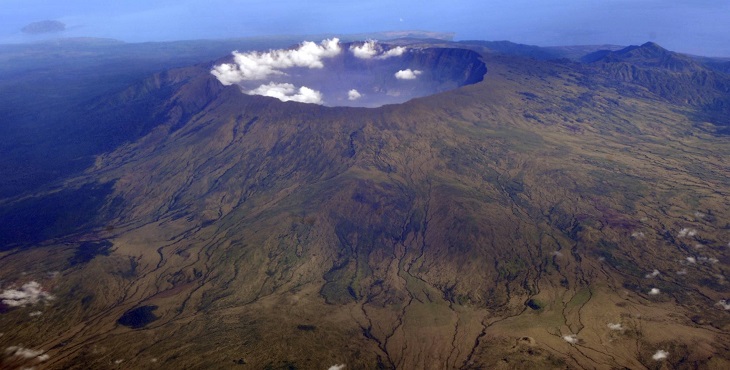
Indonesia is located along the geologically active Ring of Fire and is home to about 130 active volcanoes. The southeast Asian country has the most active volcanoes in the world. Before the year 1815, there had been no signs of volcanic activity. The eruption that year was the largest ever recorded, killing about 70,000 people. Many of whom died in the surrounding area due to starvation and disease. Its effects were noted throughout the world as global temperatures dropped over the next year. The eruption was blamed for snow and frost in New England during June and July that summer.
4. Krakatoa, Indonesia (1883)
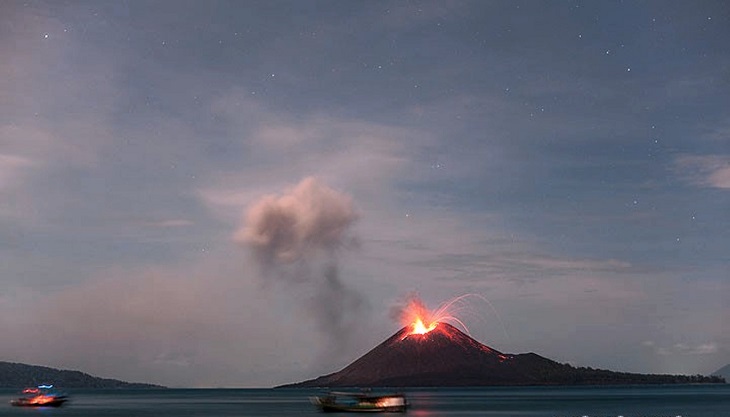
via mamananakkrakatoa.wordpress.com
Krakatoa is an island volcano located between Java and Sumatra in Indonesia. In August 1883, the explosions were heard from a distance of 5000 km across the Indian Ocean. The eruption was so powerful that ash fell on Singapore, which lays 840 km away from Krakatoa. At least 36,000 people were killed as hot volcanic gases reached Java and Sumatra, and the explosion’s devastating tsunami killed thousands more. The giant sea waves reached 140 feet (40 meters) and destroyed 165 coastal villages in the area.
5. Mount Pelee, Martinique (1902)
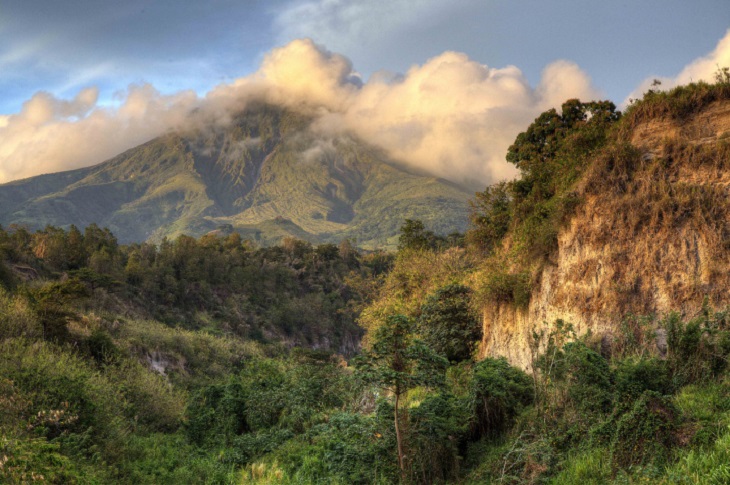
via critmag.org
Mount Pelee, located on the northern tip of the Lesser Antilles island of Martinique, is considered the most active volcano in the Caribbean. A small town St. Pierre, known as the ‘Paris of the Caribbean,’ was completely destroyed in the eruption. In April 1902, the minor explosions began at the summit of the volcano, but the local newspaper assured residents that there was no real danger. The residents stayed on because of the election. The final eruption was the most destructive. St. Pierre was rocked by earth tremors, showered in ash, and was enveloped in a thick cloud of choking sulfurous gas. There were only two survivors, a shoemaker and a prisoner in a small cell.
6. Nevado del Ruiz, Colombia (1985)

via eos.org
Nevado del Ruiz is the highest of the Colombian volcanoes, with an elevation of 5,389 m (over 17,500 ft). Even though it lays near the equator, its summit is covered with 25 square kilometers of snow and ice. The eruption in 1985 was the second most deadly eruption in the 20th century after the 1902 eruption of Mont Pelee. More than 23,000 people were killed, including most of the residents of Armero, due to the deadly volcanic mud-flows (lahars). The village was virtually destroyed, buried by mud and rubble swept down onto it.
7. Mount Unzen, Japan (1792)
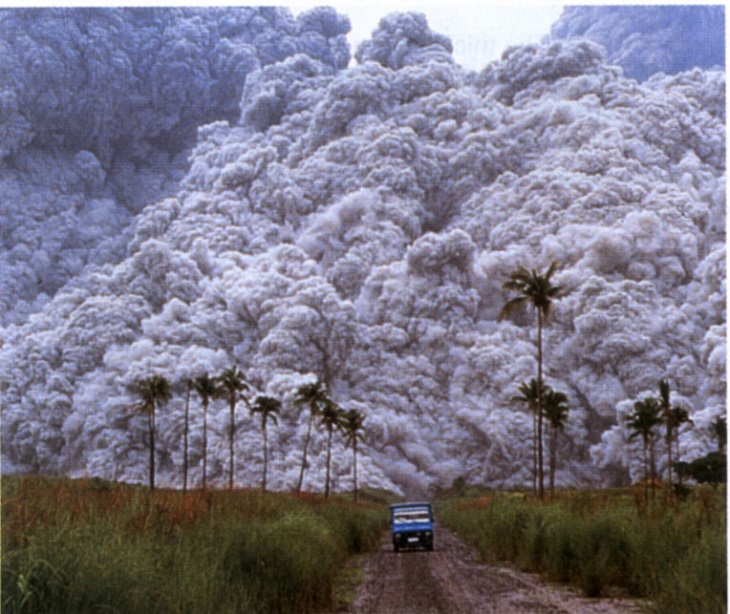
One of the greatest dangers in a volcano eruption is not the lava flow but the fast-moving scorching hot pyroclastic cloud. These flows can reach up to 400 km/h (250 miles) and can spread as far as 100 km (60 miles) from the eruption point. In 1792 the volcanic eruption of Mount Unzen in Japan led to a landslide and tsunami, causing the most deadly volcanic eruption in Japan’s history. Mount Unzen is an active volcano, last erupted in 1991.
8. Kelud, Indonesia (1586)
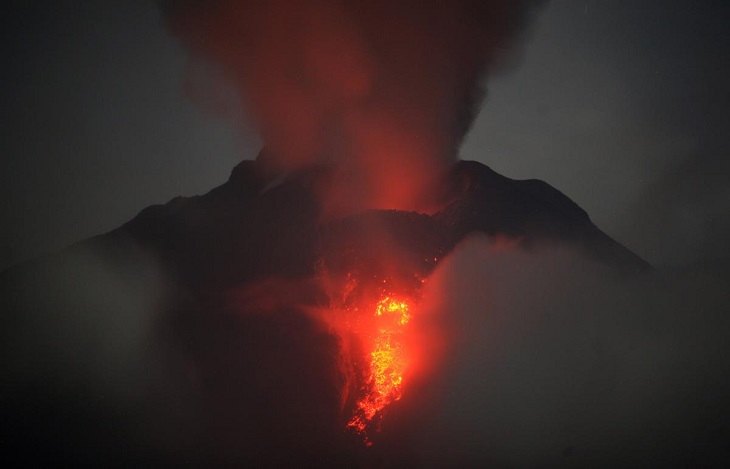
Mount Kelud volcano is one of Java’s most active volcanoes and is known for large explosive eruptions throughout its history. One of the worst volcanic disasters occurred during the 1586 eruption. The explosion claimed 10,000 lives. It last erupted on February 13, 2014, destroying the lava dome and ejecting boulders, stones, and ashes about 500 kilometers from Mount Kelud.
9. Santa Maria, Guatemala (1902)
Located on the Guatemalan volcanic highland, Santa Maria experienced a huge eruption in 1902 that completely devastated the countryside for miles around. It was associated with strong earthquakes and the dispersal of pumice and ash over a huge area. Today many people climb it daily, as the summit is also a place for Mayan ceremonies conducted by locals.
10. Mount Galunggung, Indonesia (1822)
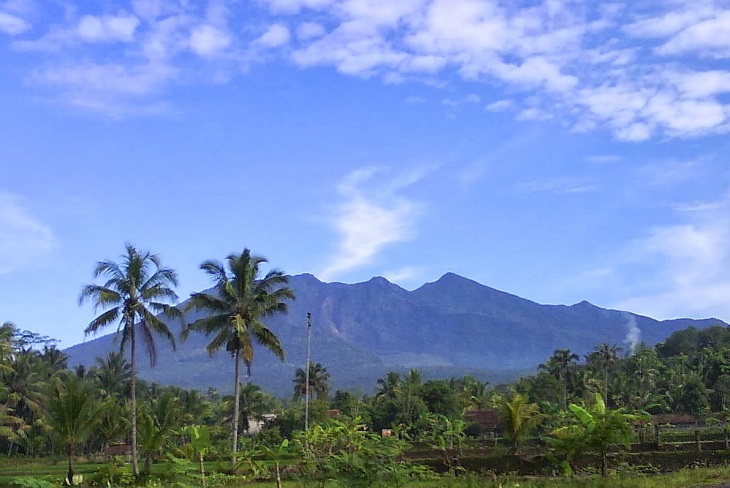
Mt. Galunggung is located in West Java, Indonesia. It has erupted four times in recorded history. The first and deadliest eruption occurred in 1822, killing 4,011 people and destroying 114 villages. The main causes of deaths were ash in the air and mudflows.

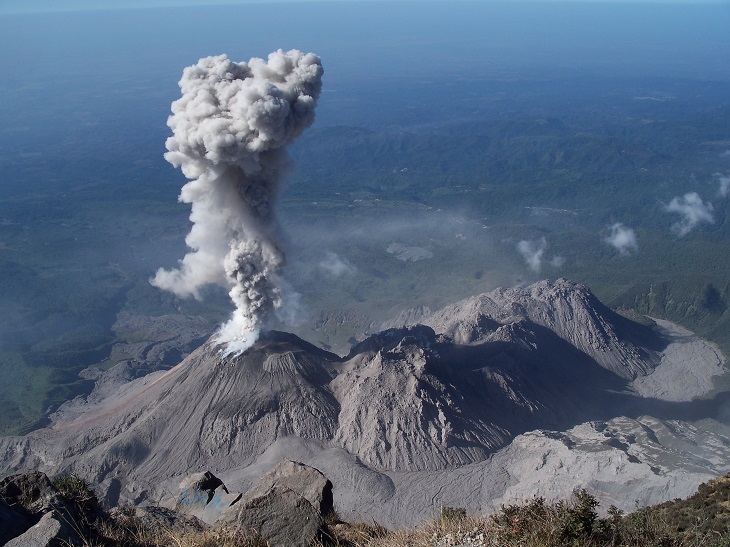



Excelente, y muy interesante. Gracias, cada día se aprende algo nuevo.
Photo No.7 is not Unzen. It’s Mt. Pinatubo, Philippines in 1991.